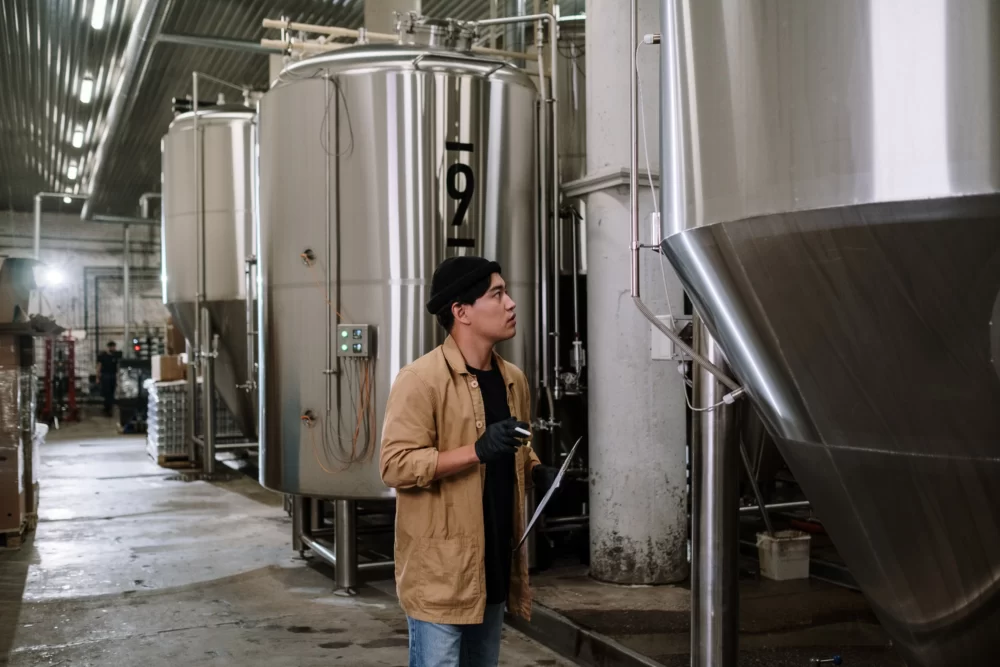Business
Cylinder Inspection: What Is The Process Like?

Cylinder inspection plays a pivotal role in maintaining safety standards across various industries that rely on compressed gases, such as manufacturing, healthcare, and even scuba diving. These pressurized cylinders, often holding gases like oxygen, nitrogen, or various specialty gases, require regular inspection to ensure they are in proper working condition and pose no risks. In this blog post, you will delve into the process of cylinder inspection, its significance, and how it contributes to overall safety. Whether it’s for medical oxygen or industrial applications, understanding the cylinder inspection process is vital for ensuring the integrity of these containers and the safety of those who use them.
Table of Contents
The Significance Of Cylinder Inspection
Cylinder inspection is not just a routine procedure; it’s a critical aspect of ensuring safety, compliance, and proper functionality. Compressed gas cylinders are used in a wide range of applications, from providing life-saving medical gases in hospitals to facilitating industrial processes in manufacturing plants. Any malfunction or failure in these cylinders can lead to catastrophic consequences. This is where cylinder inspection comes into play.
The inspection process involves a thorough assessment of various elements, including the cylinder’s physical condition, pressure levels, valve functionality, and proper labeling. Visual inspection is the first step, during which professionals look for any visible signs of damage, such as dents, corrosion, or leaks. This step is crucial, as even minor damage can weaken the cylinder’s structural integrity, potentially leading to leaks or ruptures.
The Cylinder Inspection Process
Step #1: Visual Examination
As mentioned earlier, the initial visual examination is essential for spotting any external signs of damage. This step helps inspectors determine whether the cylinder is suitable for further use or requires repairs. It’s during this phase that any noticeable issues can be addressed before they escalate.
Step #2: Pressure Testing
Pressure testing is a fundamental aspect of cylinder inspection. During this phase, the cylinder is pressurized with an inert gas, and its pressure levels are closely monitored. This test helps identify any potential leaks or pressure irregularities that could pose risks during usage. If the cylinder fails this test, it is taken out of service and sent for repairs or disposal.
Step #3: Valve Inspection
The valve of a compressed gas cylinder is another critical component that demands careful inspection. The valve ensures proper gas flow control and prevents leaks. Inspectors check for any signs of corrosion, wear, or malfunction that could compromise its functionality. Properly functioning valves are vital to prevent gas leaks, which can have serious consequences, especially in environments where safety is paramount, such as medical facilities.
Step #4: Label and Marking Check
Each cylinder should have clear labels and markings indicating its contents and relevant safety information. Inspectors verify that these labels are accurate and up to date. This step is crucial to avoid any mix-ups that could lead to the wrong gas being used in a specific application. For instance, in medical settings, ensuring that the right gas is administered is a matter of life and death.
The Role of Dema New Orleans
In the realm of cylinder inspection and maintenance, Dema New Orleans has emerged as a prominent name, known for its expertise and commitment to safety. With years of experience in this field, Dema New Orleans offers comprehensive cylinder inspection services that adhere to the highest industry standards. Their team of skilled professionals is well-versed in the intricacies of cylinder inspection, and they utilize advanced techniques and equipment to ensure the cylinders are thoroughly examined.
Dema in New Orleans understands that cylinder integrity is non-negotiable, especially when it comes to critical applications. Their services encompass visual inspections, pressure testing, valve checks, and compliance with regulatory guidelines. By partnering with experts like Dema New Orleans, industries can rest assured that their compressed gas cylinders are in safe hands.
Insights And Takeaways
Cylinder inspection is a meticulous process that holds immense significance in guaranteeing the safety and functionality of compressed gas cylinders. From identifying external damage to conducting pressure tests and scrutinizing valves, every step in the inspection process contributes to preventing potential hazards. Companies like Dema New Orleans play a pivotal role in this journey, ensuring that cylinders used in various industries meet the highest safety standards. By investing in thorough and regular cylinder inspection, industries prioritize the well-being of their workforce, the integrity of their processes, and the overall safety of their operations.
Also, Read – How Often Does Aircraft Oxygen Need to be Replaced?

-

 Business3 years ago
Business3 years agoHow to Do Long-Distance Moves with Children
-

 Travel2 years ago
Travel2 years agoQuick Guide: Moving To Santa Rosa?
-

 Real Estate3 years ago
Real Estate3 years agoWhy Dubai Festival City is a Great Neighbourhood for Young Learners
-

 Business3 years ago
Business3 years agoIs Guest Posting a Good Inbound Marketing Strategy?
-

 Business1 year ago
Business1 year agoThe Ultimate Guide To Thriving In Your Printing Franchise
-

 Business1 year ago
Business1 year agoExploring The Benefits And Challenges Of Restaurant Franchising
-

 Tech3 years ago
Tech3 years agoCyber Table That Will Change Your Life
-

 Lifestyle1 year ago
Lifestyle1 year agoDallas’ Hidden Gems: 6 Must-Try Restaurants Off The Beaten Path!









Recent Comments